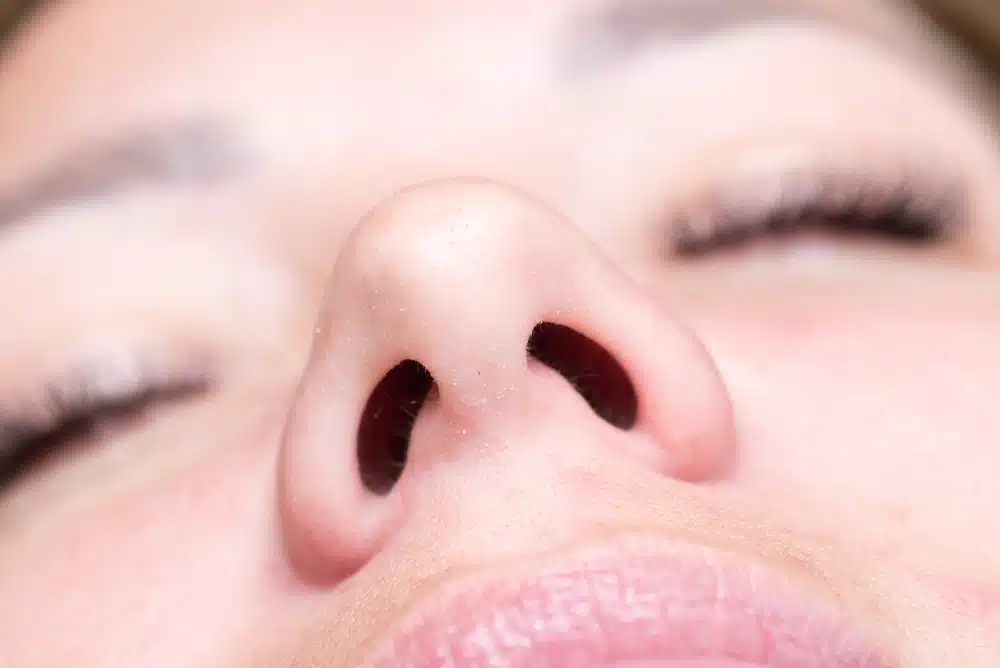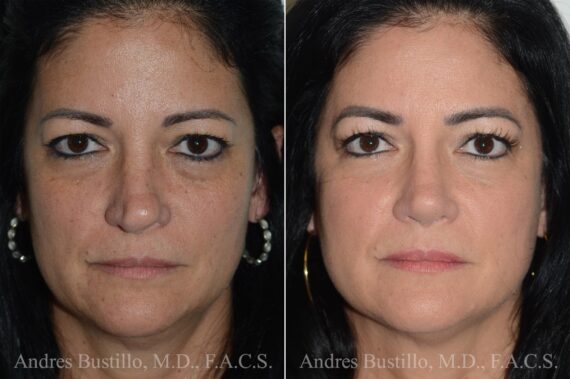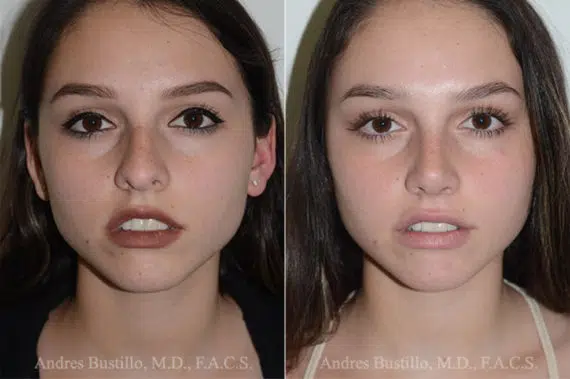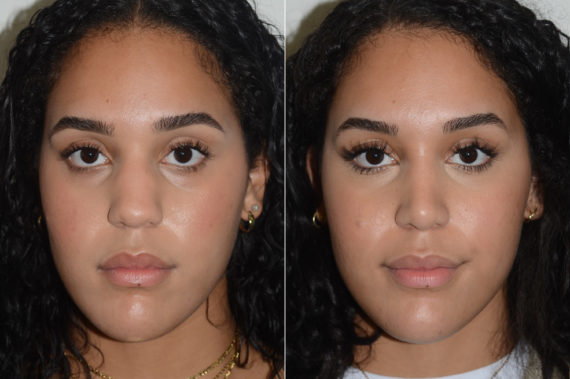Ever wonder what happens beneath the surface when scar tissue forms after a nose job? While rhinoplasty can refine and enhance your appearance, it’s important to understand how scar tissue development can affect the healing journey and final results. Whether you’re planning your first procedure or a revision, knowing what to expect can make all the difference.
The nose after rhinoplasty undergoes a complex healing process, and though outcomes are usually smooth, some patients experience abnormal scarring that alters the nose shape. By learning how to manage and prevent scar tissue, you can better prepare for a successful cosmetic surgery procedure and support long-term scar reduction.

What Causes Excessive Scar Tissue Formation After a Nose Job?
Excessive scar tissue after nose surgery typically forms as a response to trauma during the healing process. In most cases, this is a normal part of recovery. However, certain factors—such as genetics, infection, or improper post-operative care—can lead to hypertrophic scars and abnormal scarring. These can distort the refined nose shape and may require further intervention. Understanding how scar tissue forms helps patients work proactively with their surgeon to reduce complications and promote optimal healing.
Does Scar Tissue After a Rhinoplasty Procedure Go Away?
For most rhinoplasty patients, scar tissue gradually softens and becomes less noticeable over time thanks to the body’s natural healing process. Internal scar tissue, which forms beneath the surface, often stabilizes within 12 to 18 months post-surgery. While some mild thickening or firmness can persist, it typically doesn’t affect the overall appearance or function of the nose.
Visible scars are rare with closed rhinoplasty, but for open rhinoplasty, a small external incision at the base of the nose may leave a faint scar. With proper care and monitoring, these scars usually fade significantly and become nearly imperceptible.
Possible Post-Rhinoplasty Healing and Scar Tissue Complications
During recovery time, some patients may experience complications related to scar tissue that go beyond the expected healing process. Internal scarring can sometimes become dense or overactive, leading to firmness, irregular contours, or asymmetry. In more complex cases, this may result in breathing issues or distortion of the nose’s aesthetic shape.
If the healing process is disrupted—whether by trauma, infection, or lack of proper aftercare—additional scarring may develop. This can be particularly challenging in revision procedures, where the tissue has already been altered. Timely management and close follow-up with a qualified surgeon can significantly reduce the likelihood of long-term complications.
How to Prevent Scar Tissue After Rhinoplasty Surgery
Preventing scar tissue after rhinoplasty starts with attentive post-surgery care and a proactive mindset. While some scar formation is a normal part of healing, there are several proven strategies that can reduce the appearance of scars and support a smoother recovery. Knowing what to do—and what to avoid—can make a lasting difference in your surgical outcome.
Below are key postoperative care tips that can help minimize scarring, promote healthy tissue recovery, and ensure your nose heals beautifully after surgery.
Gentle scar massage
Massaging the nose gently with clean fingers or a soft applicator can help soften scar tissue and promote even healing. This technique stimulates blood flow, which may reduce the buildup of internal scarring and improve tissue flexibility. Patients should wait until their surgeon confirms it’s safe to begin massage—typically a few weeks into recovery—and should follow specific instructions to avoid putting pressure on sensitive areas or disrupting sutures. With consistent, gentle effort, scar massage can be a valuable tool in maintaining the refined shape of the nose.
Avoid sun exposure
Direct sunlight can worsen scar appearance and interfere with the healing process. UV rays may cause scar tissue to darken or thicken, making it more noticeable over time. Rhinoplasty patients should limit sun exposure during recovery and wear broad-spectrum sunscreen or protective clothing when outside. Even brief exposure can have lasting effects on sensitive healing skin, so extra caution is essential during the first several months post-surgery. By protecting your skin from harmful rays, you support a more refined and even-toned result.
Maintain a healthy diet
What you eat during recovery can significantly influence how your body heals. A diet rich in vitamins, antioxidants, and protein helps strengthen the immune system and supports tissue repair. Vitamin C, for instance, promotes collagen production, while zinc aids in wound healing. Staying hydrated and avoiding processed foods can further reduce inflammation and support overall recovery. By fueling your body with the right nutrients, you create the ideal internal environment for smooth healing and reduced scarring.
Avoid Nicotine and Alcohol
Both nicotine and alcohol can impair the body’s ability to heal efficiently. Nicotine restricts blood flow, reducing oxygen delivery to healing tissues, which can lead to prolonged inflammation or the formation of tougher, more prominent scar tissue. Alcohol, on the other hand, can dehydrate the body and interfere with immune function, increasing the risk of complications during recovery. For best results, rhinoplasty patients should avoid these substances for several weeks before and after surgery to promote optimal healing and minimize scarring.
Work With an Expert Rhinoplasty Surgeon
The skill and experience of your surgeon play a major role in how your nose heals and how much scar tissue forms. An expert rhinoplasty surgeon understands how to minimize trauma during surgery, properly align nasal structures, and provide personalized aftercare instructions that reduce the risk of complications. Working with a board-certified specialist ensures you receive comprehensive care—from planning to recovery—tailored to support the best possible outcome. Choosing wisely can make the difference between an average result and a beautifully refined nose with minimal scarring.
Rhinoplasty Scar Tissue Management and Post-Operative Care
Effective scar management after rhinoplasty requires a combination of patience, consistency, and the right treatment strategy. While many cases improve naturally, others may need non-surgical approaches or even corrective surgery to achieve a satisfying aesthetic outcome. The good news is that with proper guidance, most patients can significantly improve the look and feel of their nose as it heals.
The following options provide a range of tools for managing scar tissue and supporting recovery at different stages of the healing journey.
Standard Wound Care
Keeping the incision site clean and properly moisturized is crucial to preventing infection and minimizing scar formation. Patients should follow their surgeon’s cleaning instructions carefully, which may include using mild solutions like hydrogen peroxide to gently cleanse the area.
Applying an approved antibiotic ointment can also support healing and reduce the risk of complications. Equally important is to avoid picking at any scabs or dry skin, as this can disrupt the healing process and lead to more pronounced scarring. Consistent care helps set the foundation for a smoother recovery.
Topical Treatments
Topical treatments can be a helpful addition to your scar care routine, especially when used early in the healing process. Products containing silicone gels or sheets are widely recommended for their ability to hydrate the scar and form a protective barrier, which may soften and flatten raised tissue over time.
Other ingredients like vitamin E or onion extract may also provide benefits, though results can vary. Always consult with your surgeon before beginning any new treatment to ensure it’s appropriate for your skin and stage of recovery.
Non-Surgical Techniques
For patients who develop moderate internal scar tissue, non-surgical techniques can offer effective relief without the need for additional surgery. Corticosteroid injections are often used to soften and flatten thickened scar tissue, particularly in cases where hypertrophic scarring has formed.
Laser therapy is another valuable tool, helping to smooth surface irregularities and improve skin tone by targeting scarred areas with precision. These treatments are typically performed in-office and may require multiple sessions, but they can significantly enhance both comfort and appearance when applied at the right time during recovery.
Revision Rhinoplasty
In cases where scar tissue significantly alters the nasal structure or affects breathing, revision surgery may be necessary to restore both function and appearance. A second rhinoplasty, often more complex than the primary rhinoplasty, aims to correct issues such as asymmetry, contour irregularities, or persistent thickening caused by previous healing complications.
Because scar tissue can complicate surgical planning, it’s crucial to work with a specialist experienced in challenging nasal cases. A carefully executed revision can dramatically improve the final outcome and restore confidence in your appearance.
Questions about your procedure?
Schedule a consultation with Dr. Andres Bustillo.
Consult With a Rhinoplasty Expert Today
Choosing an experienced facial plastic surgeon is essential when it comes to rhinoplasty and post-operative scar care. Scar tissue is a natural part of healing, but when excessive or poorly managed, it can affect both function and appearance. A skilled surgeon not only performs the cosmetic surgery procedure but also guides patients through scar reduction and long-term aftercare. That’s why trusting someone with extensive experience in facial plastic surgery and reconstructive surgery is key to achieving optimal results.
Dr. Andres Bustillo brings over two decades of expertise in facial plastic surgery, offering patients exceptional care before, during, and after rhinoplasty. A Top Doctor in Miami, Dr. Bustillo completed one of the most prestigious fellowships in the world at the NYU-Weill Cornell Medical College program, training under Manhattan’s leading plastic surgery experts. Ready to feel confident about your nose again? Call us at 305-663-3380 or visit our contact page to schedule a consultation.




